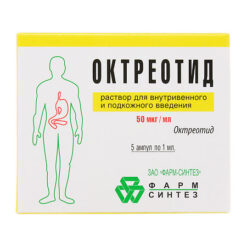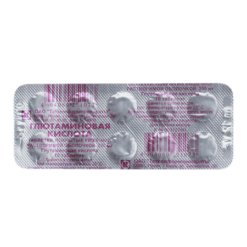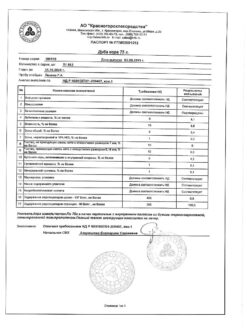No products in the cart.
Esomeprazole, 20 mg 28 pcs
€5.91 €5.17
Out of stock
(E-mail when Stock is available)
Description
Gastroesophageal reflux disease:
Treatment of erosive reflux esophagitis;
Long-term maintenance treatment after healing of erosive reflux esophagitis to prevent recurrence;
Symptomatic treatment of gastroesophageal reflux disease.
Peptic ulcer disease of the stomach and duodenum
As part of the combined therapy:
– treatment of duodenal ulcer associated with Helicobacter pylori;
– prevention of recurrence of peptic ulcer associated with Helicobacter pylori.
Long-term acid suppressive therapy in patients who have had bleeding from a peptic ulcer (after intravenous administration of drugs that reduce gastric gland secretion, for the prevention of recurrence).
Patients taking long-term NSAIDs:
– healing of NSAID-associated gastric ulcers;
– prevention of NSAID-associated gastric and duodenal ulcers in patients at risk.
Zollinger-Ellison syndrome or other conditions characterized by pathological hypersecretion of gastric glands, including idiopathic hypersecretion.
Active ingredient
Active ingredient
Composition
Composition
1 coated tablet, 20 mg contains:
Composition of the tablet core:
The active ingredient: esomeprazole magnesium dihydrate – 21.7 mg (in terms of esomeprazole – 20 mg).
Auxiliary substances: low-substituted hyprolose (hydroxypropyl cellulose), pregelatinized corn starch, colloidal silicon dioxide, mannitol, sodium stearyl fumarate, microcrystalline cellulose, type 200, sodium carboxymethyl starch.
Particle coating composition: hypromellose, macrogol-6000, acrylize II yellow 493Z220000 (methacrylic acid and ethyl acrylate copolymer (1:1), talc, titanium dioxide,
poloxamer 407, calcium silicate, sodium bicarbonate, iron oxide yellow dye, sodium lauryl sulfate).
How to take, the dosage
How to take, the dosage
Ingestion. The tablet should be swallowed whole with liquid. The tablets should not be chewed or crushed.
Adults and children from 12 years of age
Gastroesophageal reflux disease
Treatment of erosive reflux esophagitis: 40 mg once daily for 4 weeks.
An additional 4-week course of treatment is recommended in cases where esophagitis does not heal or symptoms persist after the first course.
Long-term maintenance treatment after healing of erosive reflux esophagitis to prevent recurrence: 20 mg once daily.
Symptomatic treatment of gastroesophageal reflux disease: 20 mg once daily for patients without esophagitis. If after 4 weeks of treatment the symptoms do not disappear, further examination of the patient should be carried out. After elimination of symptoms it is possible to switch to “as needed” regimen, i.e. to take esomeprazole 20 mg once daily when symptoms recur. For patients taking NSAIDs who are at risk of gastric or duodenal ulcer, treatment on an “as needed” regimen is not recommended.
Adults
Gastric and duodenal ulcer
In combination therapy for eradication with Helicobacter pylori:
Treatment of duodenal ulcer associated with Helicobacter pylori: esomeprazole 20 mg, amoxicillin 1 g, and clarithromycin 500 mg. All drugs are taken twice a day for 1 week;
– prevention of recurrence of peptic ulcers associated with Helicobacter pylori: esomeprazole 20 mg, amoxicillin 1 g and clarithromycin 500 mg. All drugs are taken twice daily for 1 week.
Long-term acid suppressive therapy in patients who have had bleeding from a peptic ulcer (after intravenous use of gastric gland-lowering drugs to prevent recurrence)
Esomeprazole 40 mg once daily for 4 weeks after completion of intravenous therapy with gastric gland-lowering drugs.
Patients taking long-term NSAIDs:
– healing of NSAID-associated gastric ulcers: esomeprazole 20 mg or
40 mg once daily: treatment duration is 4-8 weeks;
– prevention of gastric and duodenal ulcers associated with taking NSAIDs: esomeprazole 20 mg or 40 mg once daily.
Conditions associated with pathological hypersecretion of gastric glands, including Zollinger-Ellison syndrome and idiopathic hypersecretion.
The recommended starting dose is esomeprazole 40 mg twice daily. Subsequently, the dose is adjusted individually; the duration of treatment is determined by the clinical picture of the disease. There is experience of using the drug in doses up to 120 mg twice daily.
Renal insufficiency: no dose adjustment is required. However, experience with esomeprazole in patients with severe renal impairment is limited; therefore, caution should be exercised when prescribing the drug in these patients (see section “Pharmacokinetics”).
Hepatic impairment: In mild to moderate hepatic impairment, no adjustment of the drug dose is required. For patients with severe hepatic insufficiency the maximum daily dose should not exceed 20 mg.
Elderly patients: No dose adjustment is required.
Interaction
Interaction
The effect of esomeprazole on the pharmacokinetics of other drugs
The decrease in gastric hydrochloric acid secretion during treatment with esomeprazole and other proton pump inhibitors may lead to a decrease or increase in absorption of drugs whose absorption depends on the acidity of the environment. Like other drugs that reduce gastric acidity, treatment with esomeprazole may lead to decreased absorption of ketoconazole, itraconazole and erlotinib and increased absorption of drugs such as digoxin. Co-administration of omeprazole at a dose of 20 mg once daily and digoxin increased digoxin bioavailability by 10% (digoxin bioavailability was increased by up to 30% in two out of ten patients).
Omeprazole has been shown to interact with some antiretroviral drugs. The mechanisms and clinical significance of these interactions are not always known. An increase in pH during therapy with omeprazole may affect the absorption of antiretrovirals. There may also be an interaction at the level of CYP2C19 isoenzyme. When coadministration of omeprazole and some antiretroviral drugs such as atazanavir and nelfinavir during therapy with omeprazole, a decrease in their serum concentrations is noted. Therefore, their concomitant use is not recommended. Concomitant use of omeprazole (40 mg once daily) with atazanavir 300 mg/ritonavir 100 mg in healthy volunteers led to a significant decrease in bioavailability of atazanavir (AUC, Cmax and Cmin decreased by approximately 75%). Increasing the atazanavir dose to 400 mg did not compensate for the effect of omeprazole on the bioavailability of atazanavir.
Concomitant use of omeprazole and saquinavir resulted in increased serum concentrations of saquinavir; when used with some other antiretrovirals, their concentrations were unchanged. Given the similar pharmacokinetic and pharmacodynamic properties of omeprazole and esomeprazole, co-administration of esomeprazole with antiretrovirals such as atazanavir and nelfinavir is not recommended.
Esomeprazole inhibits CYP2C19, the main isoenzyme involved in its metabolism. Accordingly, co-administration of esomeprazole with other drugs whose metabolism involves the CYP2C19 isoenzyme, such as diazepam, citalopram, imipramine, clomipramine, phenytoin, etc., may lead to increased plasma concentrations of these drugs, which in turn may require dose reduction. This interaction is particularly important to keep in mind when using esomeprazole on an “as needed” regimen. Co-administration of esomeprazole 30 mg and diazepam, which is a substrate of CYP2C19 isoenzyme, decreases diazepam clearance by 45%.
The use of esomeprazole in dose of 40 mg led to increase of residual concentration of phenytoin in patients with epilepsy by 13%. Therefore, it is recommended to monitor plasma concentrations of phenytoin at the beginning of treatment with esomeprazole and at its withdrawal.
The use of omeprazole in dose of 40 mg once daily increased AUC and Cmax of voriconazole (substrate of CYP2C19 isoenzyme) by 15% and 41%, respectively.
The co-administration of warfarin with 40 mg of esomeprazole does not alter the coagulation time in patients taking long-term warfarin. However, several cases of clinically significant increases in INR (international normalized ratio) have been reported when warfarin and esomeprazole are coadministered. It is recommended to monitor INR at the beginning and at the end of coadministration of esomeprazole and warfarin or other coumarin derivatives.
. Pharmacokinetic/pharmacodynamic interaction between clopidogrel (loading dose of 300 mg and maintenance dose of 75 mg/day) and esomeprazole (40 mg/day orally) has been reported, resulting in an average 40% decrease in exposure to the active metabolite clopidogrel and an average 14% decrease in maximum inhibition of ADP-induced platelet aggregation.
The clinical significance of this interaction is unclear. In a prospective study in patients receiving placebo or omeprazole at a dose of 20 mg/day concomitantly with clopidogrel and acetylsalicylic acid (ASA) therapy and in an analysis of clinical outcomes of large randomized trials, no increased risk of cardiovascular complications was shown when clopidogrel and proton pump inhibitors including esomeprazole were used together.
The results of several observational studies are inconsistent and do not provide a definitive answer about the presence or absence of an increased risk of thromboembolic cardiovascular complications with clopidogrel and proton pump inhibitors.
When clopidogrel was used together with a fixed combination of 20 mg of esomeprazole and 81 mg of ASA, exposure to the active metabolite clopidogrel was reduced by almost 40% compared with clopidogrel monotherapy, while maximum levels of inhibition of ADP-induced platelet aggregation were similar, which is likely due to the simultaneous administration of low-dose ASA.
The use of omeprazole at a dose of 40 mg resulted in an 18% and 26% increase in Cmax and AUC of cilostazol, respectively; for one of the active metabolites of cilostazol, the increase was 29% and 69%, respectively.
The co-administration of cisapride with 40 mg of esomeprazole leads to increase of cisapride pharmacokinetic parameters in healthy volunteers: AUC by 32% and half-life by 31%, but maximum cisapride plasma concentration is not significantly changed. Slight prolongation of the QT interval, which was observed with cisapride monotherapy, was not increased with the addition of esomeprazole (see section “Special Precautions”).
Concomitant use of esomeprazole and tacrolimus resulted in increased serum concentrations of tacrolimus.
In some patients, increased concentrations of methotrexate have been noted when coadministered with proton pump inhibitors. If high doses of methotrexate are used, temporary withdrawal of esomeprazole should be considered.
Esomeprazole does not cause clinically significant changes in pharmacokinetics of amoxicillin and quinidine.
Studies evaluating short-term co-administration of esomeprazole and naproxen or rofecoxib have shown no clinically significant pharmacokinetic interaction.
The effect of drugs on the pharmacokinetics of esomeprazole
The CYP2C19 and CYP3A4 isoenzymes are involved in the metabolism of esomeprazole. Concomitant use of esomeprazole with clarithromycin (500 mg 2 times per day), which inhibits the CYP3A4 isoenzyme, leads to an increase of the AUC of esomeprazole by
2 times. Concomitant use of esomeprazole and a combined CYP3A4 and CYP2C19 isoenzyme inhibitor such as voriconazole may lead to more than a 2-fold increase in the AUC of esomeprazole. No dose adjustment of esomeprazole is usually required in such cases. A dose adjustment of esomeprazole may be required in patients with severe hepatic impairment and long-term use.
Drugs inducing CYP2C19 and CYP3A4 isoenzymes, such as rifampicin and preparations of St. John’s wort, when used in combination with esomeprazole may lead to decreased plasma concentration of esomeprazole due to accelerated metabolism of esomeprazole.
Special Instructions
Special Instructions
In the presence of any worrisome symptoms (e.g., significant spontaneous weight loss, recurrent vomiting, dysphagia, bloody vomiting, or melena) and the presence (or suspected presence) of a peptic ulcer, malignancy should be excluded, as treatment with esomeprazole may ameliorate symptoms and delay diagnosis.
In rare cases, histological examination of biopsy specimens of gastric body mucosa has revealed atrophic gastritis in patients who have taken omeprazole for a long time.
Patients who take the drug for a long period of time (especially more than a year) should be under regular medical supervision.
Patients taking esomeprazole “as needed” should be instructed to contact their physician if their symptoms change. Taking into account the fluctuations in plasma concentrations of esomeprazole when prescribing therapy on an “as needed” basis, the interaction of the drug with other medicinal products should be considered (see section “Interaction with other medicinal products”). When prescribing esomeprazole for eradication of Helicobacter pylori, the possibility of drug interactions for all components of triple therapy should be considered. Clarithromycin is a potent CYP3A4 inhibitor, therefore when prescribing eradication therapy for patients receiving other drugs metabolized with participation of CYP3A4 (for example, cisapride), it is necessary to consider possible contraindications and interactions of clarithromycin with these drugs.
Impact on laboratory values
Esomeprazole may cause elevation of chromogranin A levels, which may distort the results of examinations for neuroendocrine tumors. To avoid these problems, esomeprazole treatment should be temporarily withheld for at least five days before chromogranin A determination.
Esomeprazole, like all acid-lowering medications, may lead to decreased absorption of vitamin B12 (cyanocobalamin) due to hypo- or achlorhydria. This should be considered in patients with risk factors for reduced absorption of vitamin B12 during long-term therapy.
When using proton pump inhibitors, especially when used in high doses and for a prolonged period (> 1 year), the risk of fractures of the femoral neck, carpal bones and vertebrae (especially in elderly patients) is possible.
Impact on driving, operating machinery
Because dizziness, blurred vision and drowsiness may occur during esomeprazole therapy, caution should be exercised when operating motor transport and other mechanisms.
Contraindications
Contraindications
Hypersensitivity to esomeprazole, substituted benzimidazoles or other ingredients of the drug.
Hereditary fructose intolerance, glucose-galactose malabsorption or sugar-isomaltase deficiency.
Children under 12 years of age (due to lack of data on the efficacy and safety of the drug in this group of patients) and children over 12 years of age for other indications, except for gastroesophageal reflux disease.
Esomeprazole should not be taken together with atazanavir and nelfinavir
(see section “Interaction with other medicinal products”).
The period of breastfeeding.
With caution
Severe renal impairment (experience of use is limited), pregnancy.
Side effects
Side effects
The frequency of side effects is given as the following gradation (World Health Organization classification): very frequently (⥠1/10); frequently (⥠1/100, < 1/10); infrequently (⥠1/1000, < 1/100); rarely (⥠1/10000, < 1/1000); very rarely (< 1/10000).
Skin and subcutaneous tissue: infrequent – dermatitis, pruritus, rash, urticaria; rare – alopecia, photosensitization; very rare – erythema multiforme, Stevens-Johnson syndrome, toxic epidermal necrolysis.
Muscular and connective tissue disorders: rare – arthralgia, myalgia; very rare – muscle weakness.
Nervous system disorders: frequently – headache; infrequently – dizziness, paraesthesia, somnolence; rarely – taste disorders.
Psychiatric disorders: infrequent – insomnia; rare – depression, agitation, confusion; very rare – hallucinations, aggressive behavior.
Gastrointestinal tract: often – abdominal pain, constipation, diarrhea, flatulence, nausea/vomiting; infrequent – dry mouth; rare – stomatitis, gastrointestinal candidiasis; very rare – microscopic colitis (confirmed histologically).
Hepatic and biliary tract disorders: infrequent – increased activity of “liver” enzymes; rare – hepatitis (with or without jaundice); very rare – liver failure, encephalopathy in patients with liver disease.
Gender and breast disorders: very rare – gynecomastia.
The blood and lymphatic system: rare – leukopenia, thrombocytopenia; very rare – agranulocytosis, pancytopenia.
The immune system: rarely – hypersensitivity reactions (e.g., fever, angioedema, anaphylactic reaction/anaphylactic shock).
Respiratory system, thoracic and mediastinal organs: rarely – bronchospasm.
Renal and urinary tract: very rare – interstitial nephritis.
Visual organ disorders: rare – blurred vision.
Metabolism and nutrition: infrequent peripheral edema; rare – hyponatremia; very rare – hypomagnesemia; hypocalcemia due to severe hypomagnesemia, hypokalemia due to hypomagnesemia.
General disorders: rarely – malaise, sweating.
Overdose
Overdose
To date, extremely rare cases of intentional overdose have been described. Oral administration of esomeprazole at a dose of 280 mg was accompanied by general weakness and gastrointestinal symptoms. A single dose of 80 mg of esomeprazole caused no adverse effects. The antidote for esomeprazole is unknown. Esomeprazole binds well to plasma proteins, so dialysis is ineffective.
In case of overdose, symptomatic and general supportive treatment is necessary.
Pregnancy use
Pregnancy use
There are currently insufficient data on the use of esomeprazole during pregnancy. The results of epidemiological studies of omeprazole, which is a racemic mixture, have shown no fetotoxic effects or impairment of fetal development.
No direct or indirect adverse effects on fetal or fetal development have been observed when esomeprazole is administered to animals. Administration of the racemic mixture of the drug also did not have any adverse effects on animals during pregnancy, delivery, and postnatal development.
The drug should be administered to pregnant women only when the expected benefit to the mother outweighs the possible risk to the fetus.
It is not known whether esomeprazole is excreted with the breast milk, so it is not recommended to prescribe esomeprazole while breastfeeding.
Similarities
Similarities
Additional information
| Shelf life | 2 years. Do not use after the expiration date. . |
|---|---|
| Conditions of storage | In the dark place at a temperature not exceeding 25 °С. Store out of the reach of children. |
| Manufacturer | Izvarino Pharma, Russia |
| Medication form | enteric soluble tablets |
| Brand | Izvarino Pharma |
Related products
Buy Esomeprazole, 20 mg 28 pcs with delivery to USA, UK, Europe and over 120 other countries.












